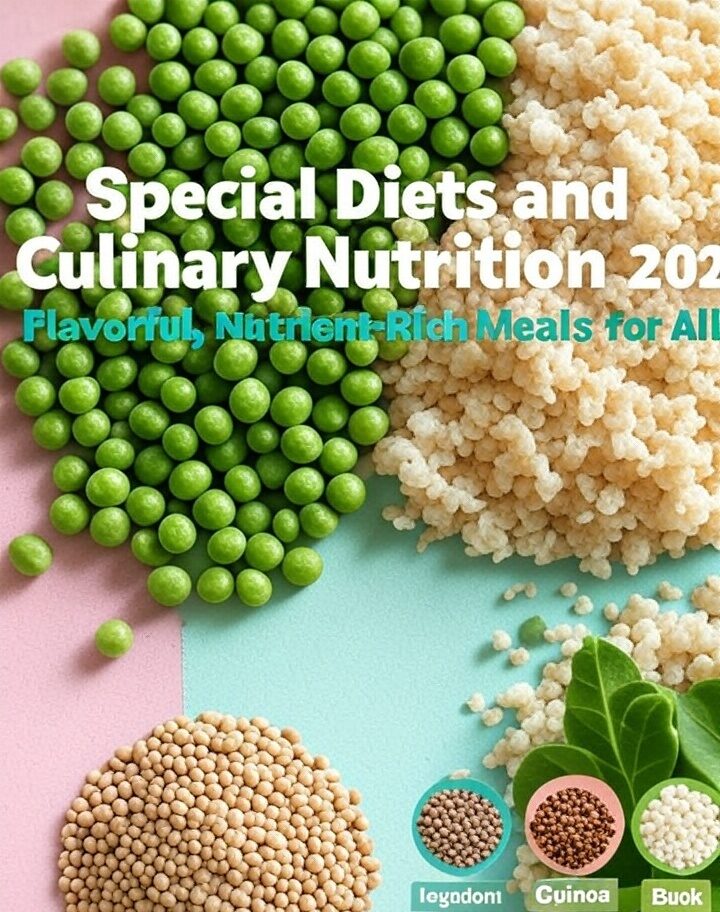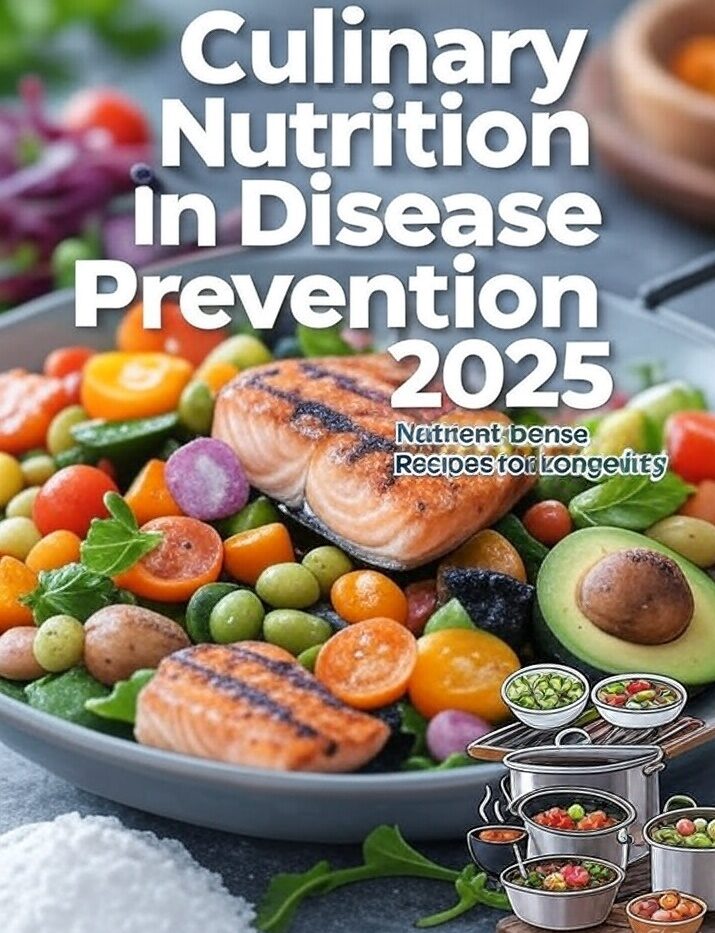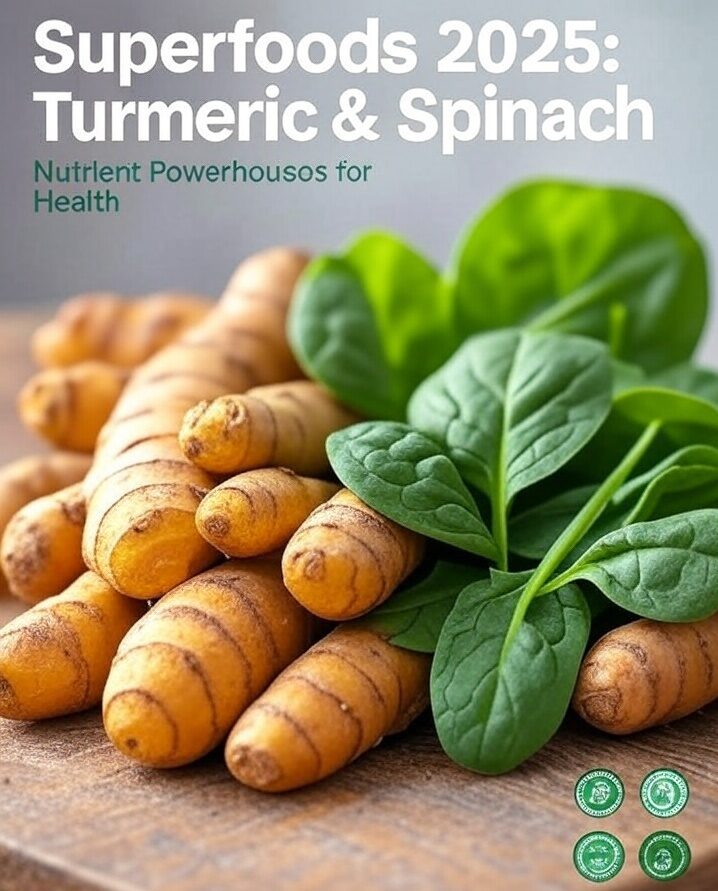In today’s health-conscious world, culinary nutrition is the key to creating meals that are both delicious and nourishing. This ultimate guide to culinary nutrition explores its core principles, blending science and artistry to craft healthy, flavorful dishes tailored to 2025’s wellness trends. From mastering healthy cooking tips to embracing nutritional meal planning, this post covers the essentials: the science behind nutrient-rich foods, techniques to boost flavor and health, strategies for special diets, and tips for all life stages.
Whether you’re a home cook seeking sustainable food practices, a fitness enthusiast aiming for personalized diet strategies, or someone managing a health condition with anti-inflammatory recipes, this guide will transform your kitchen into a hub of wellness. Backed by the latest research, we’ll dive into how culinary nutrition empowers you to eat well and live better. Ready to elevate your meals? Explore this guide and share your favorite healthy recipe below to join the culinary nutrition journey!

Section 1: What is Culinary Nutrition?
Culinary nutrition is the art and science of preparing food to maximize its nutritional value while keeping it enjoyable. By blending healthy cooking tips with nutrition knowledge, it creates balanced meals that fuel the body and delight the palate. Unlike traditional cooking, culinary nutrition prioritizes nutrient density, using techniques and ingredients that align with health goals. In 2025, culinary nutrition has evolved with the rise of personalized diets, enabling individuals to tailor meals to their unique needs—whether managing dietary restrictions, boosting energy, or enhancing wellness.
Rooted in both culinary traditions and nutritional science, this field has grown from basic meal prep to a cornerstone of modern wellness. Today, it embraces sustainable food practices, like sourcing local, seasonal ingredients, to support both health and the planet. From home kitchens to professional settings, culinary nutrition empowers people to make informed food choices, transforming everyday meals into opportunities for vitality. As personalized diet strategies gain traction, tools like nutrition apps (used by millions in 2024) make it easier to apply these principles. This section sets the stage for exploring how culinary nutrition shapes healthier, tastier lives—what’s one way you’d love to enhance your meals?
Section 2: The Science Behind Culinary Nutrition
Culinary nutrition is rooted in nutritional science, which examines how macronutrients—carbohydrates, proteins, and fats—and micronutrients like vitamins and minerals support health. Carbohydrates provide energy for daily activities, proteins repair and build tissues, and fats promote cell growth and hormone balance. Micronutrients, such as vitamin C from citrus or zinc from nuts, boost immunity and metabolism. By understanding these components, culinary nutrition transforms meals into tools for wellness through nutritional meal planning.
In 2025, culinary nutrition highlights anti-inflammatory recipes, emphasizing foods rich in omega-3 fatty acids, like salmon or flaxseeds, which research shows reduce inflammation and support heart health. Antioxidants from berries and leafy greens combat oxidative stress, while whole grains stabilize blood sugar. These science-backed choices ensure meals are both delicious and health-promoting.
For example, swapping refined oils for olive oil in cooking aligns with sustainable food practices and enhances nutrient absorption. By applying these principles, culinary nutrition empowers you to create balanced meals that fuel vitality and prevent chronic conditions. How can you incorporate these nutrients into your next dish? Explore the science of culinary nutrition to make every bite count! For more on anti-inflammatory foods, see Harvard Health’s Anti-Inflammatory Foods Guide.
Section 3: Culinary Techniques for Better Nutrition
Culinary Techniques for Better Nutrition unlock the full potential of culinary nutrition by using cooking methods that preserve and enhance food’s nutritional value. Steaming vegetables, for instance, retains more vitamins like vitamin C compared to boiling, which can leach nutrients into water. Grilling lean meats reduces excess fat while adding smoky flavor, making it a heart-healthy choice. In 2025, sous vide—a trending technique using precise, low-temperature cooking—gains popularity for retaining nutrients in proteins and vegetables, ensuring meals are both nutritious and delicious.
These healthy cooking tips also include using fresh herbs like basil or rosemary instead of salt to lower sodium while boosting flavor and antioxidants. Opting for olive oil over processed fats supports sustainable food practices and enhances nutrient absorption. Techniques like roasting root vegetables caramelize natural sugars, making healthy ingredients more palatable without added calories. By mastering these methods, you’re enhancing culinary nutrition to create meals that support wellness goals, from weight management to immunity. Culinary nutrition aligns with these practical strategies to transform your kitchen into a health hub. What cooking technique will you try to elevate your next meal? Explore these tips to make every dish a step toward better health!

Section 4: Meal Planning and Preparation
Meal planning is central to culinary nutrition, enabling you to design balanced meals packed with macronutrients—carbs, proteins, and fats—and micronutrients like vitamins and minerals. By prioritizing nutritional meal planning, you ensure every dish supports health goals, from sustained energy to immune strength. In 2025, culinary nutrition simplifies this process with tools like Mealime, which boasts over 600,000 users (2024 data) and offers recipes tailored to personalized diet strategies, accommodating vegan, gluten-free, or low-carb needs.
Prepping meals in advance saves time and keeps healthy options accessible, reducing reliance on processed foods. Start by batch-cooking grains like quinoa or roasting vegetables for the week, pairing them with lean proteins like chicken or tofu. Incorporate sustainable food practices by choosing seasonal ingredients to maximize freshness and flavor. Planning also minimizes food waste, aligning with eco-conscious trends. Apps and tools make culinary nutrition actionable, with features like grocery lists and nutrient tracking to streamline prep. These healthy cooking tips empower busy individuals to eat well consistently. What’s one meal you’d love to prep this week? Apply these culinary nutrition strategies to transform your routine into a foundation for wellness!
Section 5: Special Diets and Culinary Nutrition
Culinary nutrition adapts seamlessly to special diets, meeting diverse needs like vegan, gluten-free, or low-carb with flavorful, nutrient-rich meals. In 2025, culinary nutrition offers innovative solutions, such as plant-based alternatives like pea protein, which mimics meat’s texture for vegans while delivering high protein. For gluten-free diets, almond flour creates satisfying baked goods, preserving taste and nutrition. Low-carb options like cauliflower rice, used in anti-inflammatory recipes, support weight management and stabilize blood sugar, aligning with health goals.
Adapting culinary nutrition ensures everyone can enjoy balanced, health-focused meals. For example, vegan dishes incorporate sustainable food practices by using lentils or chickpeas for protein, reducing environmental impact. Gluten-free recipes rely on nutrient-dense quinoa or buckwheat, while low-carb meals emphasize leafy greens and healthy fats like avocado. These personalized diet strategies cater to allergies, preferences, or medical needs without sacrificing flavor. In 2025, meal planning apps (serving millions in 2024) simplify creating diet-specific menus, making culinary nutrition accessible. How will you tailor your next meal to your dietary needs? Embrace these healthy cooking tips to craft dishes that nourish and delight, no matter your diet!

Section 6: Culinary Nutrition for Different Life Stages
Culinary Nutrition for Different Life Stages ensures meals meet the unique needs of children, adults, and seniors. Children require calcium-rich foods like dairy or fortified plant milk to support growing bones, while adults need protein from sources like lean meats or legumes to maintain muscle mass. Seniors benefit from fiber-packed foods, such as whole grains and vegetables, to aid digestion and heart health. In 2025, culinary nutrition caters to these needs with personalized diet strategies, supported by apps like MyFitnessPal, used by over 600,000 people in 2024, to track nutrient intake and simplify meal planning.
For kids, healthy cooking tips include blending spinach into smoothies for vitamins without compromising taste. Adults can boost energy with balanced meals featuring quinoa and grilled chicken, while seniors might enjoy roasted root vegetables for fiber and flavor. These strategies align with sustainable food practices, using seasonal ingredients to maximize nutrition and affordability. By tailoring culinary nutrition to each stage, meals become tools for growth, vitality, and longevity. What nutrient will you prioritize for your life stage? Use these nutritional meal planning tips to craft age-specific dishes that nourish and energize!
Section 7: The Role of Culinary Nutrition in Disease Prevention

Culinary nutrition prevents chronic diseases like heart disease and diabetes by prioritizing nutrient-dense, anti-inflammatory recipes. Foods such as fatty fish rich in omega-3s, nuts, and olive oil reduce inflammation and lower cardiovascular risks, as supported by 2025 research. In 2025, culinary nutrition supports longevity through sustainable food practices, like using cooking methods such as steaming, which preserves vital nutrients like antioxidants in vegetables, or grilling to minimize unhealthy fats.
By incorporating healthy cooking tips, such as swapping butter for avocado oil or adding turmeric for its anti-inflammatory properties, culinary nutrition transforms meals into tools for disease prevention. Whole grains like farro and berries packed with antioxidants help stabilize blood sugar, reducing diabetes risk. These choices align with personalized diet strategies, tailoring meals to individual health needs. For example, meal prepping with nutrient-rich ingredients ensures consistent healthy eating, a practice embraced by millions via apps in 2024. Culinary nutrition promotes a proactive approach to wellness, empowering you to cook for vitality. What’s one anti-inflammatory food you’ll add to your diet? Start with these strategies to make every meal a step toward a healthier future!
Conclusion
Culinary nutrition is a transformative approach, blending taste and health to elevate your life. This ultimate guide explored the essentials of culinary nutrition in 2025, from its scientific foundations to healthy cooking tips like steaming to preserve nutrients. We covered nutritional meal planning for balanced meals, adapting to special diets like vegan or low-carb, tailoring nutrition for all life stages, and using anti-inflammatory recipes to prevent chronic diseases.
Rooted in sustainable food practices and personalized diet strategies, these principles empower you to make every meal a step toward wellness. Now, it’s time to act—explore our linked cluster posts for deeper insights into specific topics or start applying these strategies in your kitchen today. Whether you’re a home cook or health enthusiast, culinary nutrition offers endless possibilities. What’s your next step in your culinary nutrition journey? Share your plans or favorite healthy recipe below and join the movement toward a healthier, tastier future!



